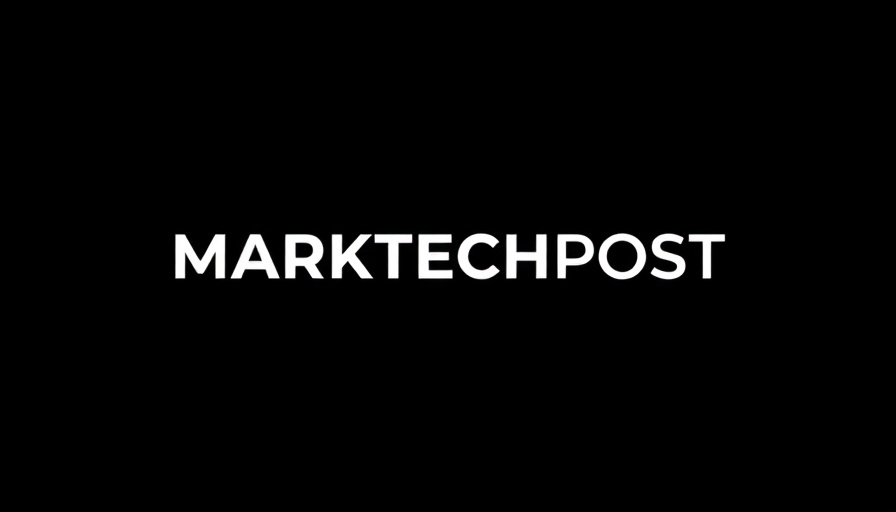
Tencent's Hunyuan Models: Pioneering Multilingual Translation
Tencent's latest advancements in machine translation technology have captured attention within the tech community and beyond. Introducing the Hunyuan-MT-7B and Hunyuan-MT-Chimera-7B, these state-of-the-art models are designed to revolutionize language accessibility and pave the way for small and medium-sized businesses (SMBs) to engage with a global audience more effectively.
Understanding the Hunyuan-MT-7B
The Hunyuan-MT-7B model stands out with its capability to translate among 33 different languages, including several Chinese ethnic minority languages such as Tibetan and Uyghur. This is particularly important as it allows for a more inclusive reach, opening business opportunities in regions that may have previously been overlooked. With a prime focus on both high-resource and low-resource languages, this model sets a new high bar in translation accuracy, achieving remarkable outcomes that can drive effective communication for SMBs.
The Power of Hunyuan-MT-Chimera-7B
The Hunyuan-MT-Chimera-7B, on the other hand, impresses by integrating various translation outputs through an innovative weak-to-strong fusion model. This unique approach improves translation quality by combining outputs and utilizing advanced techniques like reinforcement learning. Small businesses aiming to provide exceptional user experiences will find this ability crucial, as it ensures that their messages resonate clearly and accurately across different languages and cultures.
Why Open Source Matters for SMBs
Tencent has chosen to open source these groundbreaking models, which represents a significant win for smaller enterprises. Open-source technology allows businesses of all sizes to leverage top-tier capabilities without incurring massive costs associated with proprietary solutions. By utilizing the Hunyuan models, SMBs can improve their online marketing efforts, content creation, and customer engagement strategies. This democratization of advanced technology is essential for fostering innovation and growth among smaller players in the market.
The Training Framework That Powers Hunyuan
In essence, the models' success is driven by a meticulous five-stage training framework designed specifically for translation tasks. Key highlights include:
- General Pre-training: Utilizing a massive dataset of 1.3 trillion tokens, ensuring a broad understanding of languages and dialects.
- MT-Oriented Pre-training: This involves using monolingual corpora, ensuring that the model can handle a variety of tasks, enhancing its overall robustness.
- Supervised Fine-Tuning (SFT): This step involves refining the model with high-quality pairs ensuring contextual accuracy and relevance in translations.
SMBs can utilize the Hunyuan models effectively, as their training ensures comprehensive language coverage and contextual acuity, leading to seamless conversations across borders.
Embracing Trends in Translation Technology
The landscape of translation technology is rapidly evolving. With tools like Hunyuan, businesses can now devise strategies that focus on global reach, tapping into new markets more efficiently. The ability to communicate in the customers' preferred language fosters trust, improves user experiences, and ultimately enhances brand reputation. For small and medium-sized enterprises, leveraging these technology trends is not just beneficial but necessary for remaining competitive.
What This Means for Your Business
As an SMB owner, embracing these advancements in translation technology could unlock new business opportunities. Here are a few steps you can take:
- Adopt Hunyuan Models: Start utilizing Hunyuan-MT-7B or Hunyuan-MT-Chimera-7B in your marketing materials, customer service, or communication to bridge language gaps.
- Invest in Training: Equip your team with the skills needed to effectively use these tools, ensuring optimal use.
- Engage Globally: Use these tools to create localized content that resonates with audiences in different regions, enhancing customer loyalty.
Taking these proactive steps can empower your business to thrive in an increasingly interconnected world.
Culminating Thoughts: The Future of Translation
The potential of Hunyuan models extends beyond just language translation. With their advanced capabilities, they represent a futuristic move towards better communication not just at the corporate level but also in personal interactions, making the world a smaller place. For SMBs ready to leap into the future, embracing these tools will not only simplify their operations but also expand their reach significantly.
Don't wait—leveraging state-of-the-art technology like Hunyuan models can propel your business forward and help streamline your global engagement strategies.
 Add Row
Add Row  Add
Add 



Write A Comment